What is a Recording Engineer?
Quick Answer
A recording engineer is responsible for recording during the tracking and overdub sessions of the recording process. A recording engineer needs to have a comprehensive understanding of acoustics, tape machine or DAW operation, gain staging, mic placement, and microphone types, and the studio gear used for recording.
What is a Recording Engineer in Detail
We often discuss various aspects of mastering, and the nuances of some of the more technical minutiae that accompanies the practice; however, all of that knowledge and effort wouldn’t mean much if it wasn’t for talented recording engineers.

Any great mix, master, or record started in the hands of a knowledgable and talented recording engineer.
Although sometimes viewed less glamorously than mixing or mastering, tracking or recording engineers play a pivotal role in the creation of a single, EP, or album. The vast knowledge a tracking or recording engineer needs to possess makes the position challenging, but ultimately a rewarding endeavor.
A recording engineer is responsible for:
- Greeting and accommodating the Artists and Musicians
- Fielding ideas from producers and artist producers
- Operating recording equipment hardware
- Operating recording equipment software
- File management and session delivery
- Microphone placement and sound source recording
- Any technical issues that may arise
As you may imagine, being responsible for all of these things at once can become daunting (which may be the reason some engineers turn toward solitary engineering positions like mixing and mastering.)
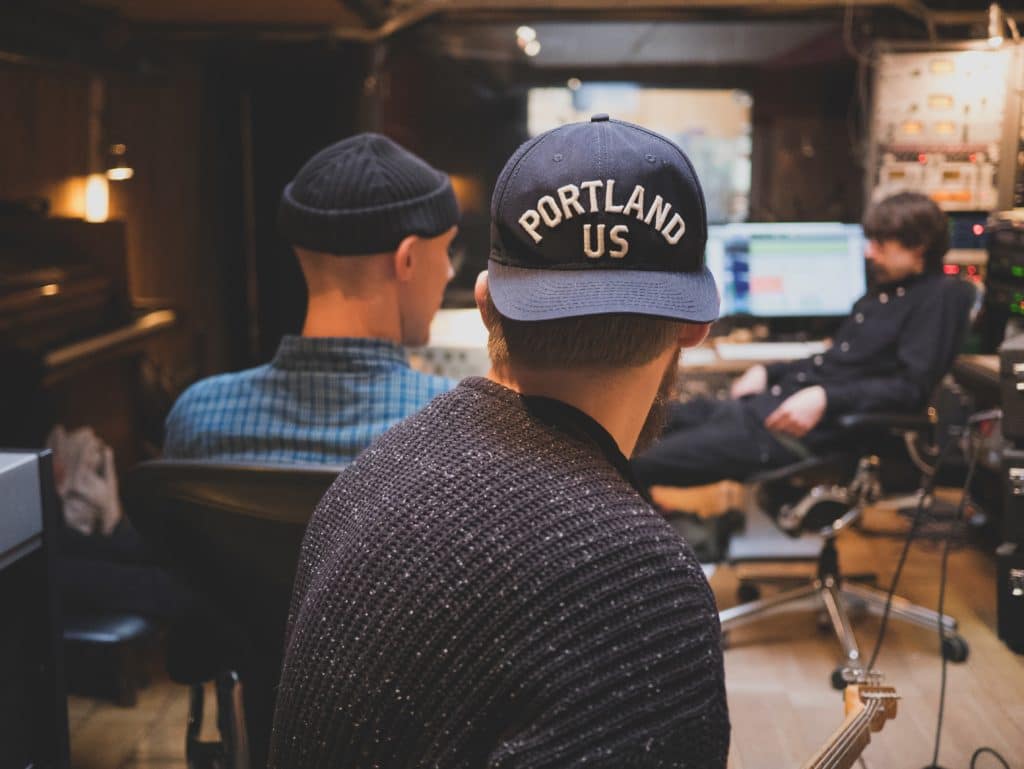
Being a recording engineer means holding a lot of responsibilities at once.
A recording engineer needs to be in control of the studio and studio equipment, the proper execution of a project, and on occasion, the behavior of the artists and musicians recording the project.
With the complexity of the position in mind, let’s delve deeper into what it means to be a recording engineer. We’ll be discussing the practical knowledge a recording engineer needs, the personal skills needed, and the comprehensive understanding of the physics of sound, or acoustics, needed by a recording engineer.

A recording engineer needs to understand acoustics, and how to operate various hardware and software.
Lastly, we’ll be taking a look at once a recording engineer is responsible for once the session is complete and the artists, producers, and musicians have gone home.
If you’re a recording engineer, or you’ve recorded your own project, and now you need it mastered - send it to us here:
We’ll master it for you using analog equipment, and send you a free mastered sample.
What Happens During a Tracking Session?
To better understand what happens during a tracking session, let’s look at it from the perspective of a day in the life of a recording engineer. With that said, here’s a step by step view of the recording process as it relates to the recording engineer.
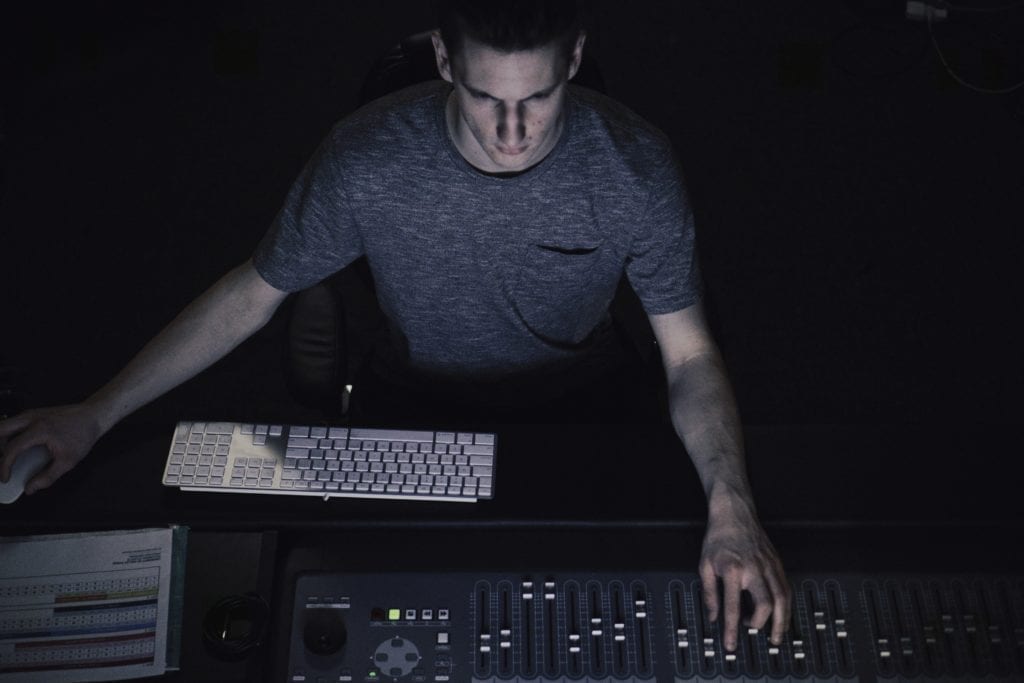
Many events occur during a tracking session - most of which the recording engineer plays a direct role.
First, the recording engineer arrives at the studio. Hopefully, he or she has knowledge of the session that will occur, and what will need to be recorded.
With that in mind, the recording engineer with either begin to set up the session in the DAW, or begin to set up the microphones. Both of these options are valuable in that they give the recording engineer a “head start.” This makes it much less likely the artist and musicians will have to wait to record - and more likely they’ll be a repeat client.
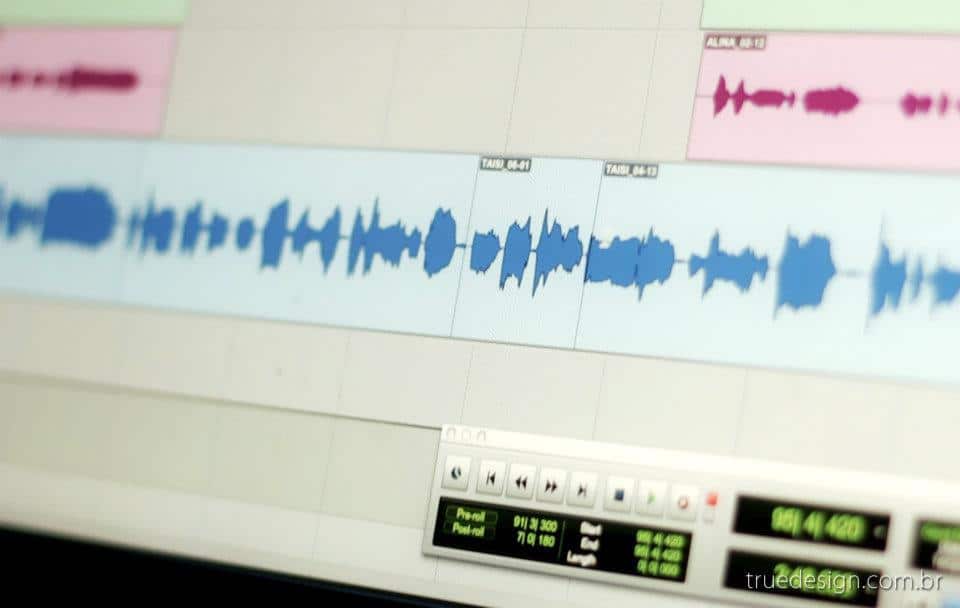
Setting up the DAW session prior to the artist's arrival means the session will begin sooner.
If there is enough time, both the DAW session and the microphones can be set up prior to the artist’s arrival.
Once the artist has arrived, the recording engineer will help them bring in their gear, and place this gear in the correct rooms, or booths. The microphones will then need to be accurately positioned to best pick up their sound source.
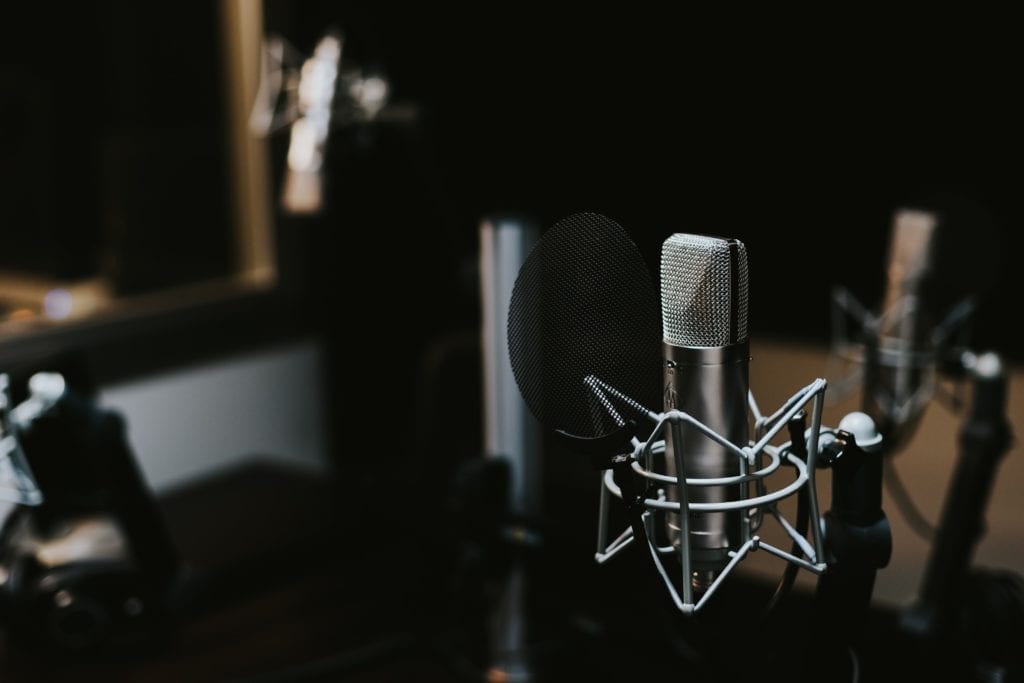
The engineer may also set up microphones before the artists arrive.
For example, if recording electric guitar, the position of the microphone in relation to the cone of the guitar amp is incredibly important. Getting this set up just right but in a timely manner is something the recording engineer will need to do.

With the equipment set up, the microphones will need to be adjusted to best pick up their sound source.
With the musicians in place and the microphones connected to their correct “tie lines,” fed into preamps, and then routed correctly into the DAW, the recording engineer will need to establish levels . Levels are the amplitudes of the incoming signal and are affected by the gain applied to the microphone's incoming signal via the preamp.

Levels need to be established by the recording engineer, to ensure no clipping occurs, and that every instrument is being properly recorded.
Almost simultaneous to getting levels, the recording engineer will need to route that signal to a headphone amp or multiple headphones. This way, the musicians playing are able to hear themselves and each other during the recording process.
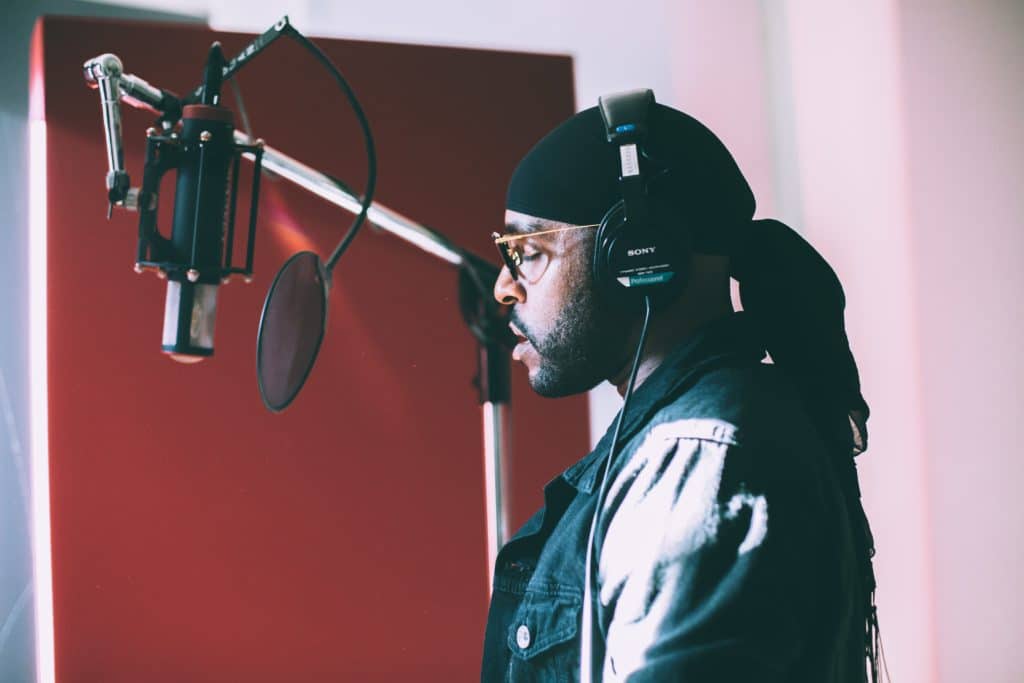
The musicians recording will need to hear themselves. This means sending them a rough "mix" via headphones.
Most of the time, individual “mixes” will need to be sent to each headphone amp to best accommodate the musician’s or artist’s needs. Granted all sessions vary, and this setup may look slightly different, but in most recording sessions - what was just described is the case.
With the slightly different mixes sent to each musician performing, and the microphones at the correct or nearly correct levels, the session’s tempo and the song's key will need to be established. In most cases, a metronome will also need to be sent to the headphone amp.
At this point, the musicians and artists may do a “pass ” which is used to further establish levels, and as a way for the performers to warm up.

A "pass" allows musicians to warm up, and to further establish levels.
Once everyone feels ready, the recording begins. Depending on the performers, this may be an easy process, or a difficult one. They may either be prepared for the session of unprepared.
If they are prepared, the foundation of a song may be accomplished in one take. If not, the opposite is true.
Depending on how long it takes to get a good foundation for the recording, the performers will then come into the control room to listen to the recording so far - decide if anything needs to be changed, or if a specific take needs to be punched in.
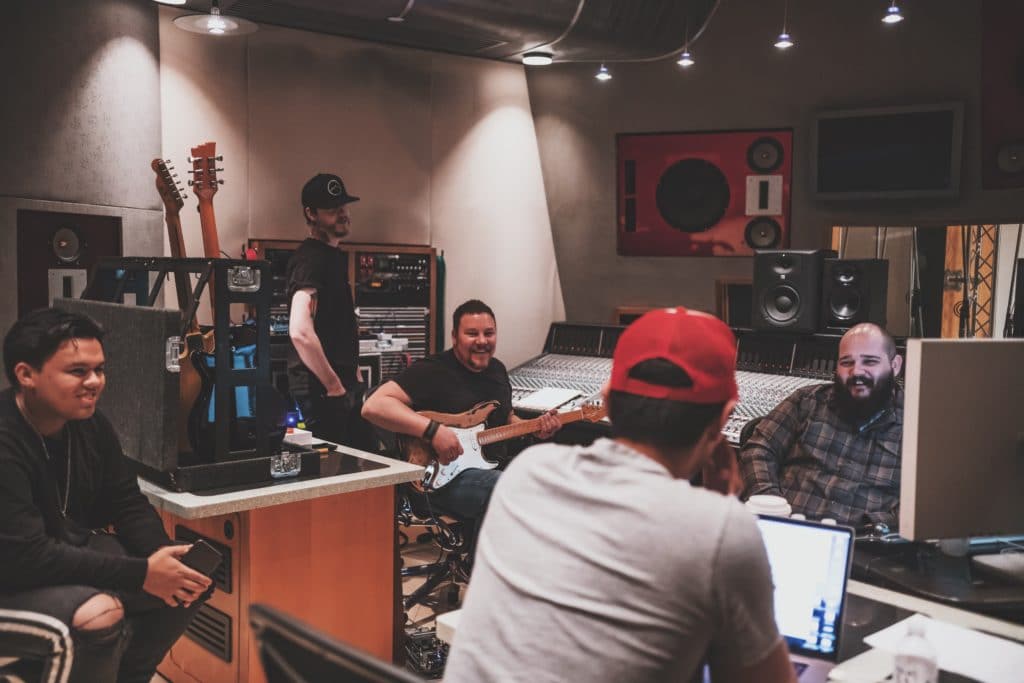
After the foundation of the song is recorded, everyone will come back into the control room to take a listen.
The “foundation ” of the recording that has been mentioned, typically refers to the primary percussive instrument, the rhythm sections, and a scratch vocal which can serve as the final vocal during editing. The foundation may vary based on the genre - for example, the foundation for a rap recording may simply be a pre-made beat, in which case, the vocals are the primary focus of the session.

The foundation of a recording is typically drums, bass, rhythm, and a scratch vocal.
Once everything has been recorded within the limited time frame of the session, the recording engineer will either send the session files to the producer, label, artist, or any party responsible for the project. The recording engineer is responsible for ensuring the session is properly stored and can be easily accessed for any overdubs or retracking.
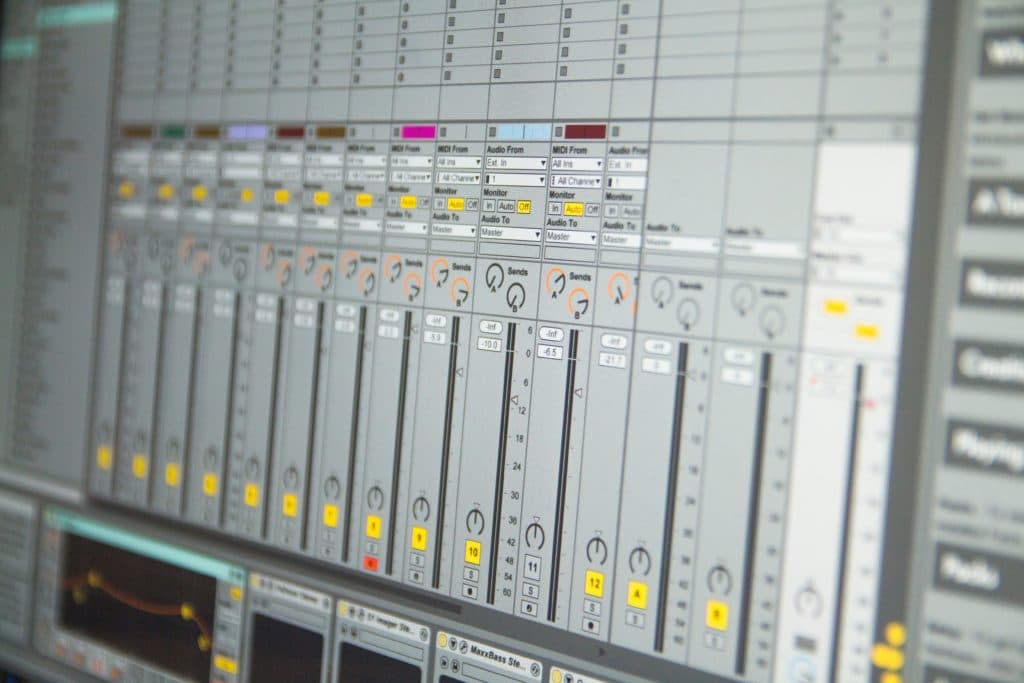
Once everything has been recorded, a recording engineer must ensure that the session can easily be accessed in the future.
If you’re an artist and you want to know more about all the steps of creating a record, check out our blog post on the topic:
It shows the step by step process of how a song goes from its initial writing stages to being released and distributed.
How Does Acoustics Relate to a Recording Engineer?
The acoustics of a room, sound source, and the combination between the two need to be understood by any recording engineer. Knowing how these variables interact dictates the placement of the microphones, the type of microphone used, and the positioning of the performer during the recording process.

The space in which a performance is held greatly affects the sound of the performance.
Typically speaking, most recording environments will be treated to control reflections, and ensure that standing waves or antinodes don’t exist within the room. With that in mind, the main concern a recording engineer will have is avoiding phase cancellation.

Phase relations is something a recording engineer will need to understand and think about during a tracking session.
There are many instances in which phase cancelation can occur during tracking. The primary reason is spacing two microphones to capture one sound source.
For example, if you were to place a microphone 3 feet away from an acoustic guitar, and another microphone 1 foot away from the acoustic guitar, you would in turn capture that same sound source at two different times.

Using two microphones on an acoustic guitar will introduce phase cancellation.
When the two signals were overlapped or played back simultaneously, the varying phases of each respective track would result in some phase cancellation. As you can imagine, this isn’t ideal for recording a sound source.
Another good example of this is when using a spaced pair mixing technique to record drum overheads. If the two microphones are spaced from the drum heads at two different distances, the end result will be phase cancellation during playback.
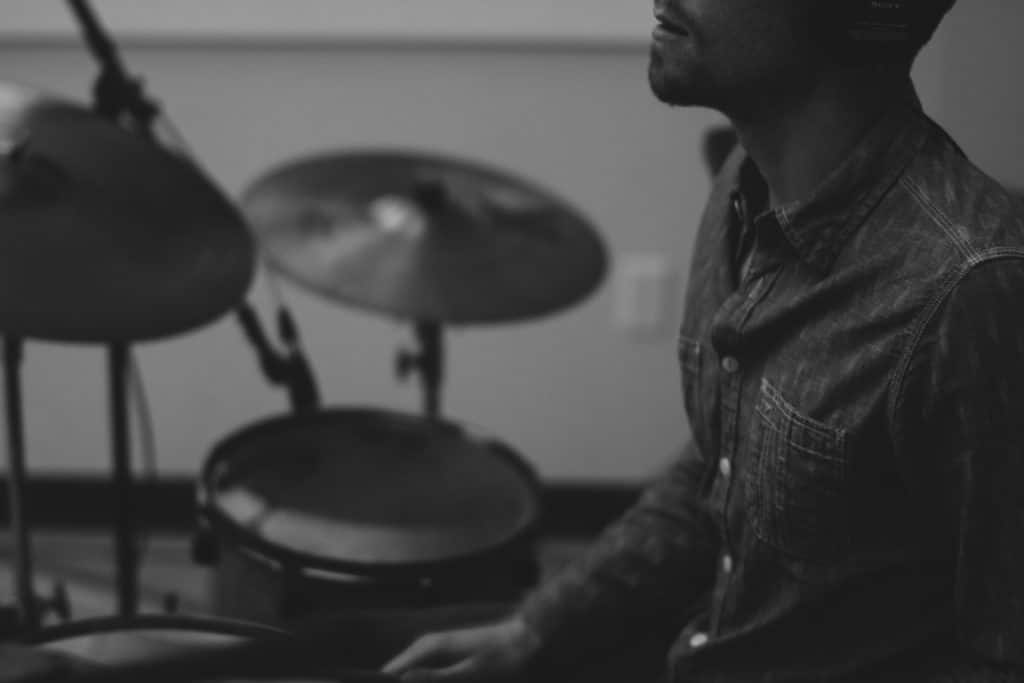
Drums are often recorded with a "spaced pair" overhead microphone setup. This often results in phase cancellation.
A good way a recording engineer may avoid this cancellation is to measure the distance from the cent rung of a snare drum to each microphone capsule. This center rung is a good estimation of the center of the drum kit - if the distance of each microphone capsule to the snare’s center rung is identical, phase cancellation will be minimized.
Granted, there is no way to avoid phase cancellation entirely - two notes played on an instrument with a longer sustain or decay will have phase cancellation. With that in mind, any chord played on an instrument inherently contains phase cancelation.

Playing any two notes at the same time will cause some form of phase cancellation.
But, knowing how to keep this cancellation to a minimum is a large part of being a successful recording engineer.
Similar to phase relations is the method with which a recording engineer will record a sound source. When it comes to polar patterns, an engineer can choose from cardioid, hyper-cardioid, figure 8, Omni-directional, and in increments in between, depending on the microphone used.
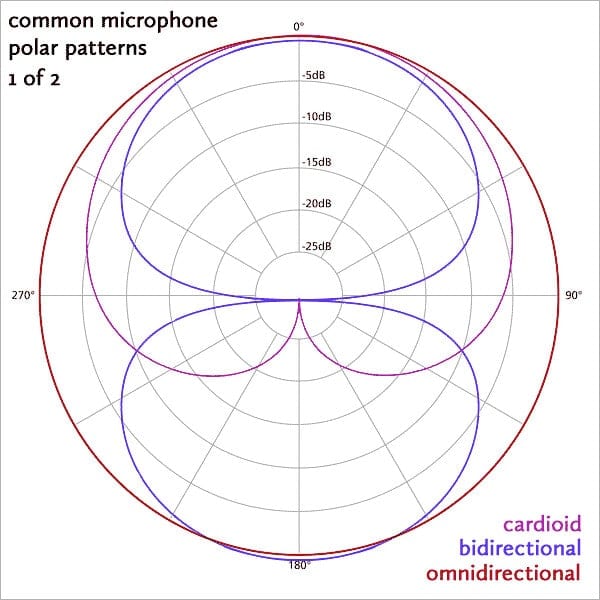
Different microphone polar patterns can be used to record the sound source in different manners and with various degrees of ambient room sound.
For example, if a recording engineer wanted to record the sound of the instrument, but wanted to keep the recording sounding very natural , as if the listener was in the room with the performer, an omni polar pattern may be a good option.
To contrast this, if a recording engineer wanted to record the instrument and the instrument alone , and to avoid recording any room reflection, the best option would be a hyper-cardioid polar pattern.
These are just some of the things. recording engineer will need to consider when recording a sound source.
If you’ve already worked with a recording engineer, and now your project is in the mixing or mastering stages, send it to us here:
We can give you a free mastered sample of your mix, so you can hear what our services sound like.
Just to recap, here are some things a recording engineer will need to understand about acoustics before recording:
- How the room interacts with the sound source
- Which microphone polar pattern is best for the intended recording
- How to position the microphones to minimize phase cancellation
- Know how various instruments how unique phase relations and how to best capture these instruments
If you’d like to learn more about recording in general, take a look at some of our other blog posts on the topic:
Here, you’ll find more information on topics relating to recording and the production steps that come after recording.
How Does Genre Relate to a Recording Engineer?
The genre of the band or artist being recorded greatly influences how a recording engineer will approach the project, and often influences which recording engineer is hired. The genre of the recording affects the microphones used, the gear used, the microphone placements, as well as the general recording setup.
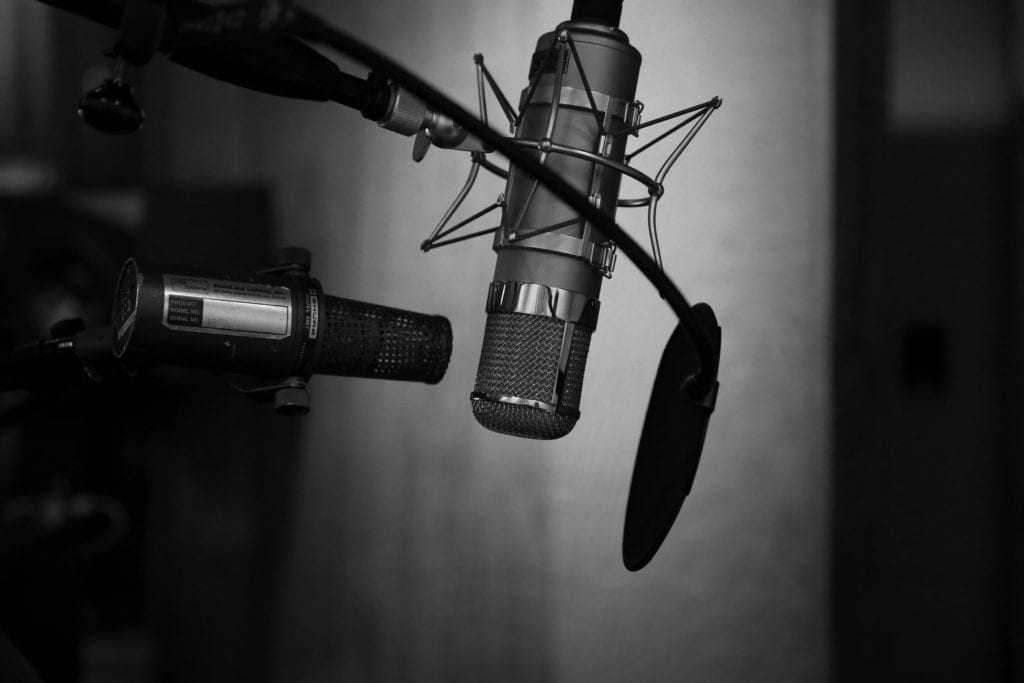
The genre of the artist being recorded affects many things - microphone choice included.
There is a reason why certain recording engineers carve out a niche within a particular genre. Most of the time,a recording engineer will either need to adhere to how a particular genre is recorded or will need to invent a new method of creating and shaping the sound of that genre.
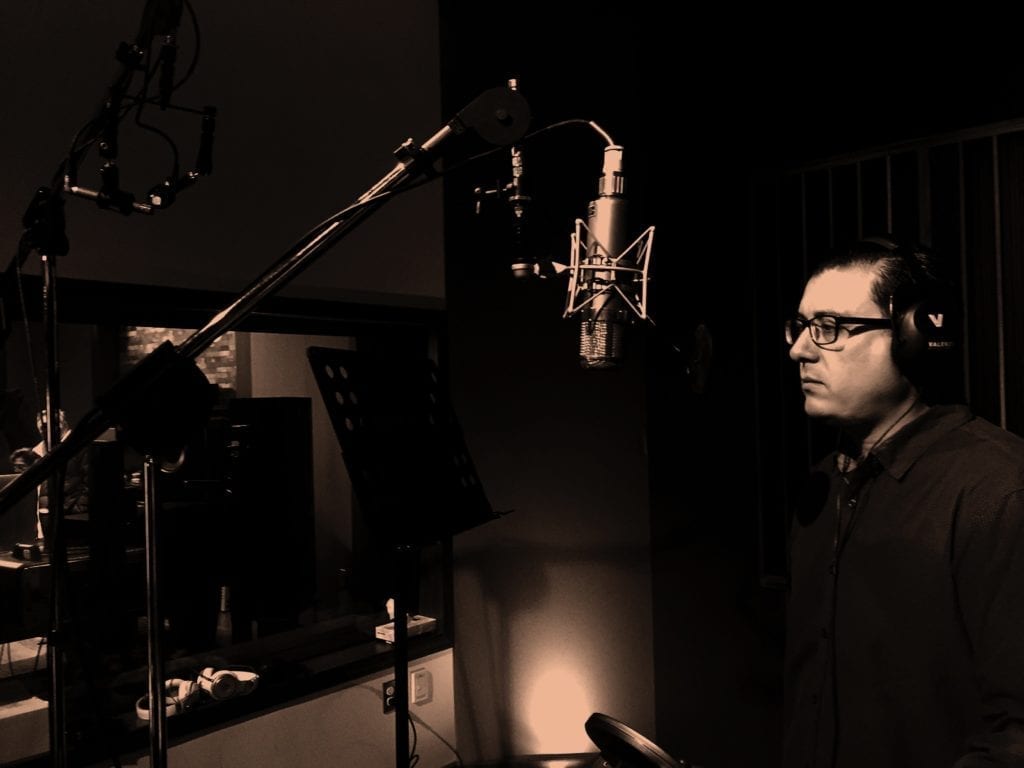
Most recording engineers adhere to how things are typically recorded - a select few rethink how to record a genre.
Those recording engineers that can influence the sound of a genre by introducing unique recording techniques are often the ones that become the most successful. In that regard, they are recognized not just as a technician or an engineer, but an artist in their own right.
A good example of a recording engineer that has greatly influenced the sound of the genre in which he works is Steve Albini. Working with the Pixies, Nirvana, Pj Harvey, Jawbreaker, and Guided by Voices amongst many other great acts, Albini was able to use his knowledge of recording, as a means to stylizing the records on which he worked.

Steve Albini is an example of an engineer who reshaped how a genre was recorded, and in turn, influenced the genre itself.
Any engineer with a comprehensive understanding of recording technology, how gear sounds, and how it can be utilized to best emphasize the emotional context of a song, can achieve the same level of success as Albini, or many other talented and renowned recording engineers.
But, how does an engineer do this? How can the gear and recording technique used encapsulate the emotional content of a song?
In truth, an adequate answer to this question would be far too complex and multifaceted to detail here - but hopefully, with some examples, it may become a little clearer.
So, for example, say you’re recording a rock vocal in which the lead singer, the music itself, the lyricism, and the audience listening to this band’s music all project a certain sense of disenfranchisement. In other words, say this band accurately demonstrates their strife or discontent in some way.

Audiences relate to their favorite bands and to genres in a myriad of ways. How the record sounds can be a big part of this relationship.
How would you record the vocals, and what gear would best accentuate that message and feeling amongst listeners? Would you record the vocal as cleanly as possible, say with a Neumann condenser? Or would the broadcast and slightly compressed feel of a RE-20 better this emotion?
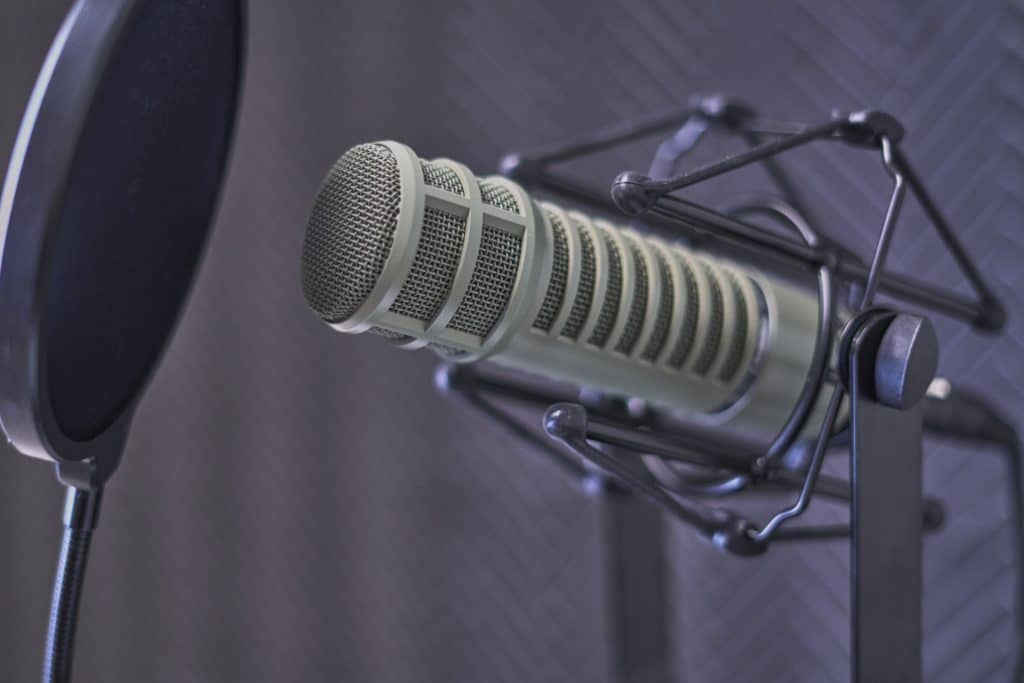
Microphone choice, amongst many other choices, can help stylize a record.
This example is by no means perfect, but it does illustrate an important point about the role of a recording engineer. That is, a great recording engineer can understand how the nuances of recording can greatly impact the emotional interpretation of a recording.
If you don’t believe me, imagine your favorite record but recorded using microphones from the 1920s. Without a doubt, the tonal characteristics introduced by the use of these particular pieces of gear would affect your emotional interpretation of the album.
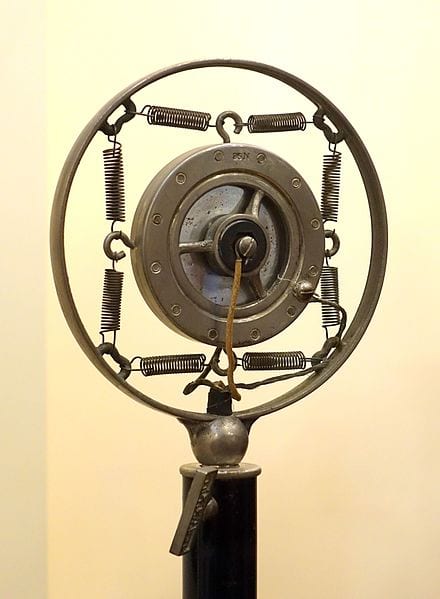
Imagine your favorite record, recorded with century-old microphones. How would that affect your perception of and emotional tie to that record?
A recording engineer understands this concept and seeks to find how the right microphone placement, the right choices in technique, and the proper gear can culminate into a great sounding and emotive experience for the listener.
If you want to learn more about how genre affects audio production, check out our blog post on mastering rock music:
It shows how different genres and listener expectations affect how audio is processed.
Conclusion
The role of a recording engineer is by no means simple. Although it’s typically the most seemingly understood role in audio production, the vast array of responsibilities held by a recording engineer as well as the often busy workflow make for a truly involved and unique job.
Becoming a recording engineer takes an immense amount of knowledge regarding acoustics, electrical physics, and the many technical and operational aspects of recording a sound source.
Furthermore, becoming a popular and successful recording engineer takes people skills, considering a recording engineer is working directly with a group of artists, performers, and music industry types.
With enough foresight and an expert level of understanding and love for the craft, a recording engineer can help shape the sound of records in a significant way. When this happens, it may be significant enough to change a genre and the music that follows for years to come.
If you’re a recording engineer, and you need a reliable mastering studio to master your recordings, send them to us here:
We’ll master one for you and send you a free mastered sample.
Are You a Recording Engineer?




